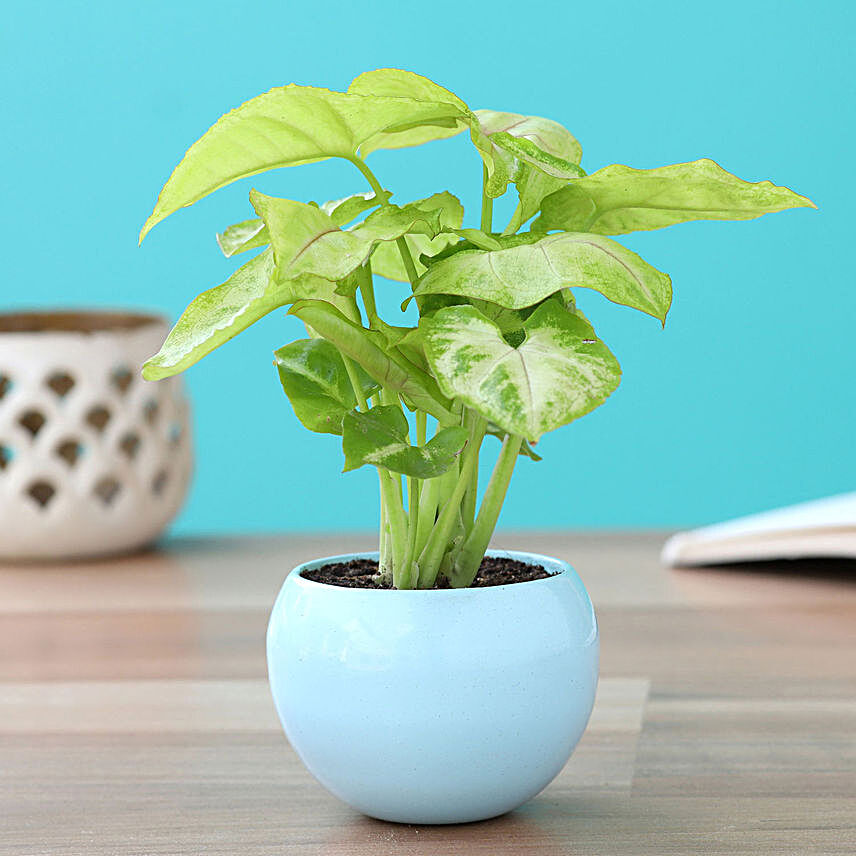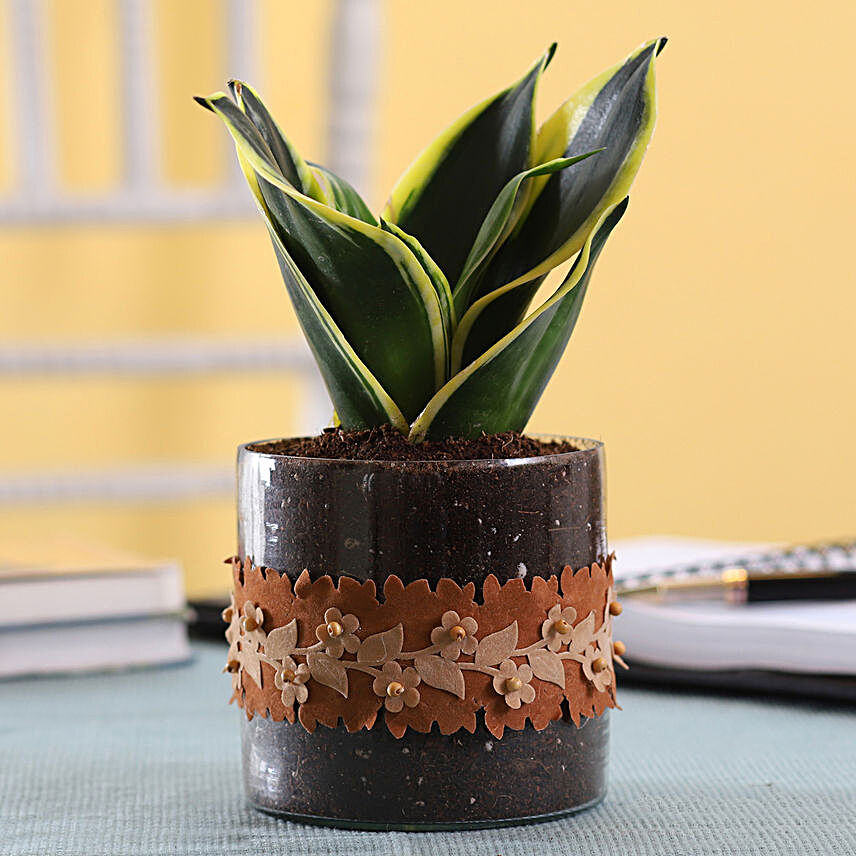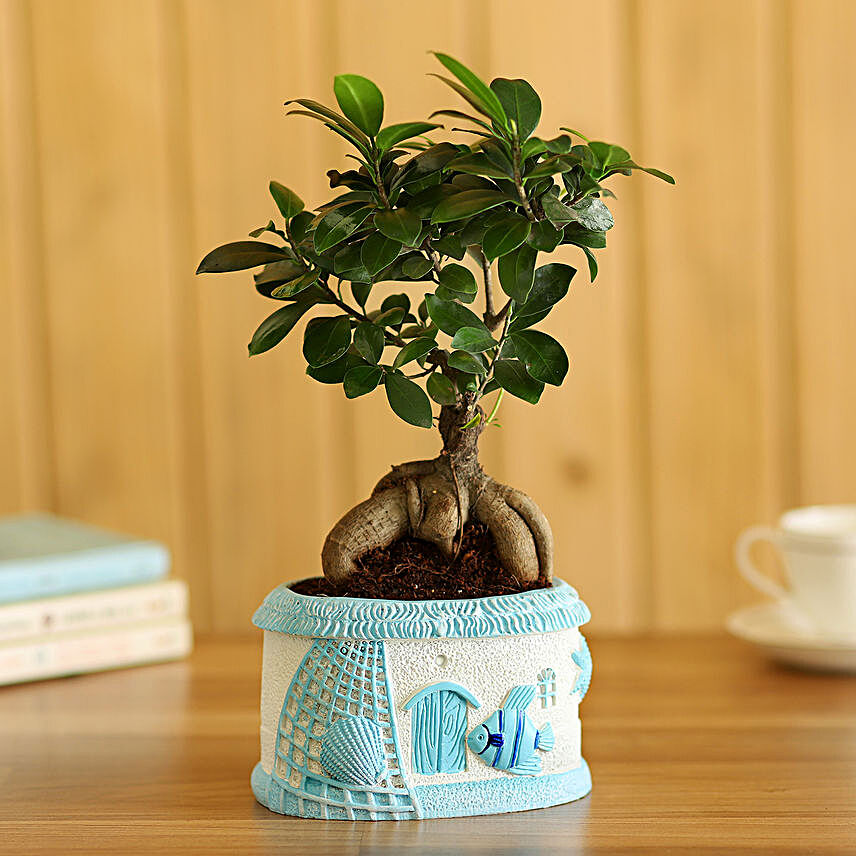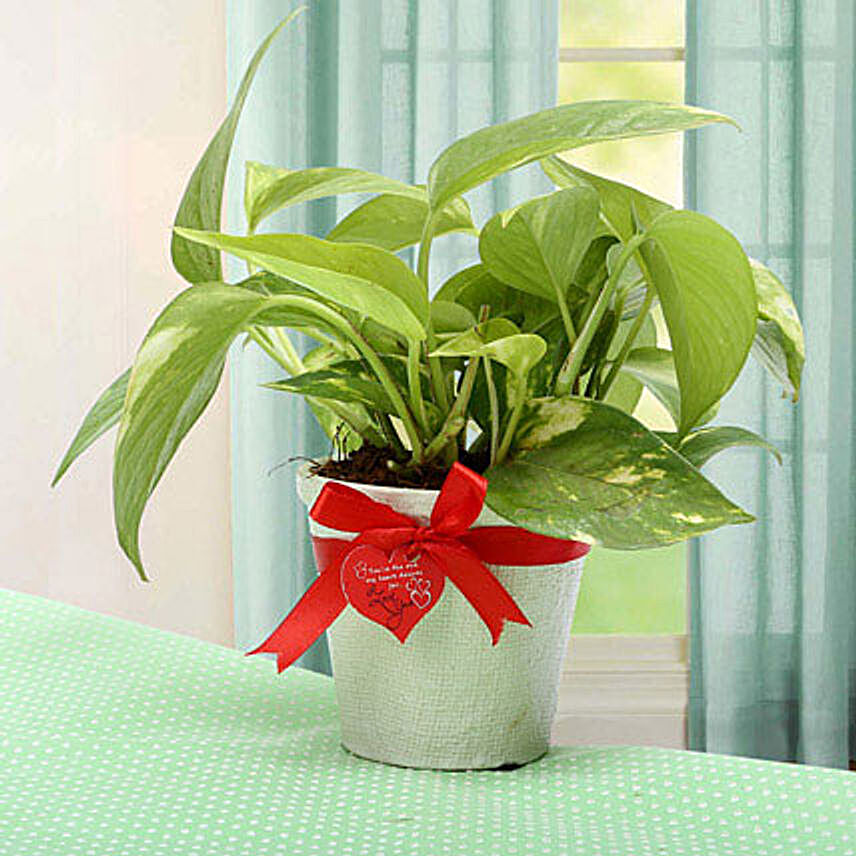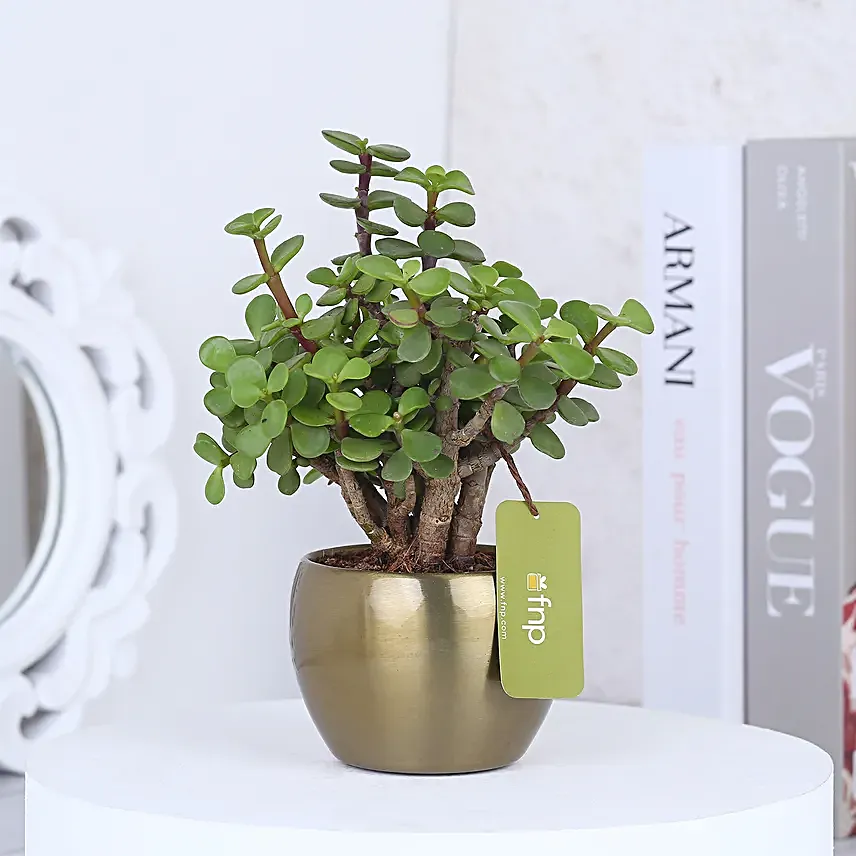Green Grace in a Glass: How to Grow a Money Plant in Water (and Make It Thrive)
- Author: Anushka Published: 21th Aug, 2025
There's something quietly magical about watching a green vine curl and stretch its way across your space, transforming corners with its presence. The Money plant, with its marbled leaves and timeless appeal, is one such living charm. Known as Pothos or Devil's Ivy, this plant not only beautifies but also brings calm, positivity, and a touch of prosperity wherever it grows.
At FNP, we've always believed in the joy of simple, rooted things. And growing a Money plant in water? It's one of the easiest, most graceful ways to invite nature indoors. Seasoned plant parent or just starting out? Here's your complete guide on how to grow a Money plant in water, keep it healthy, and help it flourish faster than you'd think.
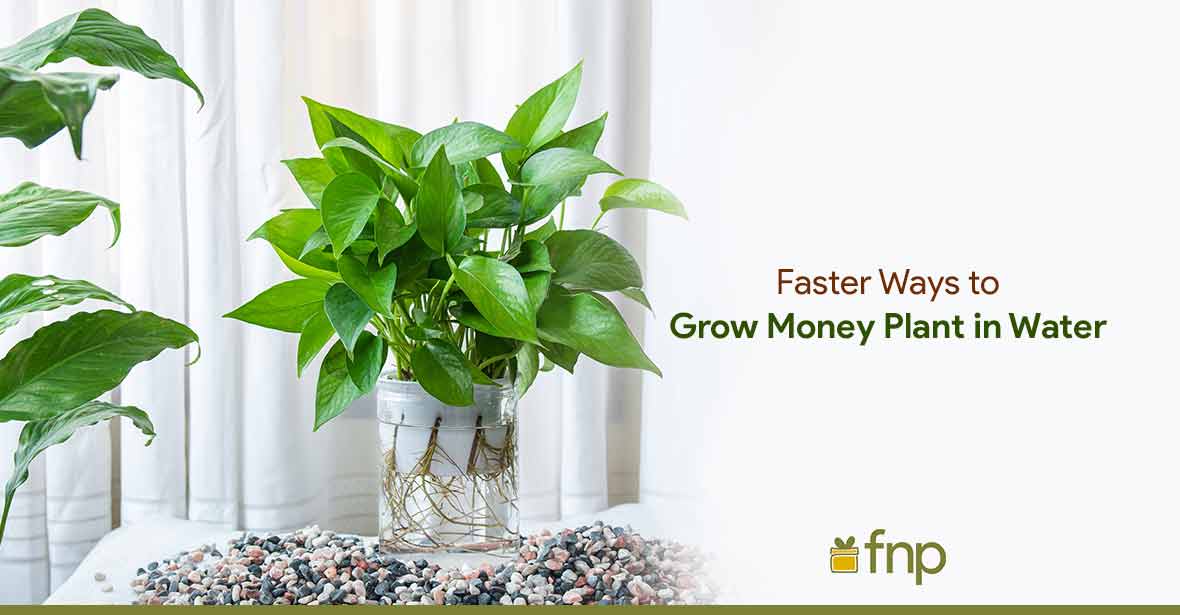
Why Water is Enough for the Money Plant
You don't need soil, garden tools, or even a terrace to raise this green gem. A clear jar, a cutting, and some water are all it takes. Growing a Money plant in water is not only visually stunning, it's also refreshingly simple. Imagine delicate white roots dancing in a glass vase, catching the light. It's natural minimalism at its finest.
But as with all beautiful things, there's a little art to getting it just right.
How to Grow a Money Plant in Water
If you've ever wondered how to cut a Money plant and grow it in water, it all starts with a healthy stem and the right environment.
You'll Need:
- A clear glass bottle, vase, or jar
- Fresh, room-temperature tap water
- A healthy Money plant cutting with at least 2–3 nodes
- (Optional) A few drops of seaweed or liquid fertiliser
Step-by-Step Process:
- Select Your Cutting - Choose a vine that's green and strong. Make a clean cut just below a node (that little joint where the leaf meets the stem). This is key when propagating a Money plant in water.
- Place in Water - Submerge the lower nodes in the jar filled with clean water. Ensure the leaves remain above the waterline to prevent them from rotting.
- Find the Right Spot - Place the jar somewhere bright, but shielded from direct sunlight to avoid scorching the leaves. The plant loves soft, indirect light.
- Wait and Watch - In about 10-14 days, you'll see delicate white roots emerge. That's your sign that things are going well.
- Maintain Gently - Change the water every week, and wipe the jar clean to avoid algae buildup.
That's it. That's how to grow a Money plant in water, an elegant dance of patience and care.
How to Grow a Money Plant in Water Faster
Looking to speed things up a bit? We get it. There's something deeply satisfying about seeing your green friend thrive. Here's how to grow a Money plant in water quickly, with minimal fuss and maximum growth.
- Fresh Water Leads to Fast Roots - Change the water every 5-7 days. This maintains high oxygen levels and inhibits bacterial growth.
- Light, But Not too Much - A sunny windowsill can be too harsh. Stick with indirect light to avoid scorching the leaves.
- Fertilise Lightly - Every 4-6 weeks, add a few drops of liquid fertiliser, preferably seaweed-based, to boost growth.
- Keep Things Tidy - A clean jar equals a healthy root system. Algae not only look unpleasant but also compete for oxygen.
- Spray, Don't Soak - Occasionally mist the leaves with aloe vera water. It boosts shine and helps the plant absorb nutrients naturally.
- Trim with Intention - Prune older, yellowing leaves and any trailing vines that seem sluggish. It redirects energy to new, healthy shoots.
With these simple tweaks, maintaining a Money plant becomes more intuitive, more rewarding.
How to Care for a Money Plant in Water: Less is More
One reason we at FNP love this plant is how low-maintenance it is. That said, there's a right way to approach how to take care of a Money plant in water for it to truly thrive:
- Avoiding direct sun, heat, and harsh rays can harm both leaves and roots
- Don't overcrowd the jar with too many stems; give each cutting breathing room
- Use non-chlorinated water if possible; filtered or stored tap water works well
And remember, even though you're growing it in water, the plant still loves interaction. Wipe the leaves gently, talk to it if you wish, yes, that counts as care too!
Gifting a Touch of Tranquillity
Styling your reading nook or gifting a token of natural beauty? A Money plant in water is both symbolic and effortlessly stylish. It represents growth, fortune, and an easy-going rhythm of life. At FNP, we offer beautifully packaged plant gifts that convey these meanings, thoughtfully designed to bring serenity into every home.
It's not just about how to grow a Money plant in water, but about creating a living moment, one that unfurls gently over time, leaf by leaf.
Frequently Asked Questions
Q.1 What are the benefits of growing a Money plant in water?
Ans. Growing a Money plant in water is a fuss-free and visually appealing option. It purifies the air, grows well in indoor conditions, and requires little care. Plus, it's believed to attract positive energy and prosperity.
Q.2 How often should I change the water for a Money plant?
Ans. One of the easiest tips on how to take care of Money plants in water is to change the water every 5 to 7 days. Fresh water not only keeps the roots oxygenated but also prevents bacterial buildup, making it essential for successfully growing a Money plant in water.
Q.3 How to grow a Money plant in water step-by-step?
Ans. Start by cutting a healthy stem below a node. Place it in a glass jar filled with clean water, ensuring the nodes are submerged. Keep it in indirect sunlight and change the water weekly. You'll see root growth within 1–2 weeks.
Q.4 Does the Money plant need fertiliser if grown in water?
Ans. Yes, though not frequently. A few drops of liquid fertiliser every 4–6 weeks will support healthy growth. It's especially useful if you're looking for tips to grow a Money plant faster in water.
Q.5 Can a Money plant grow in water without sunlight?
Ans. Not entirely. While it doesn't need direct sunlight, it does require bright, indirect light to thrive. Low light slows down its growth.
